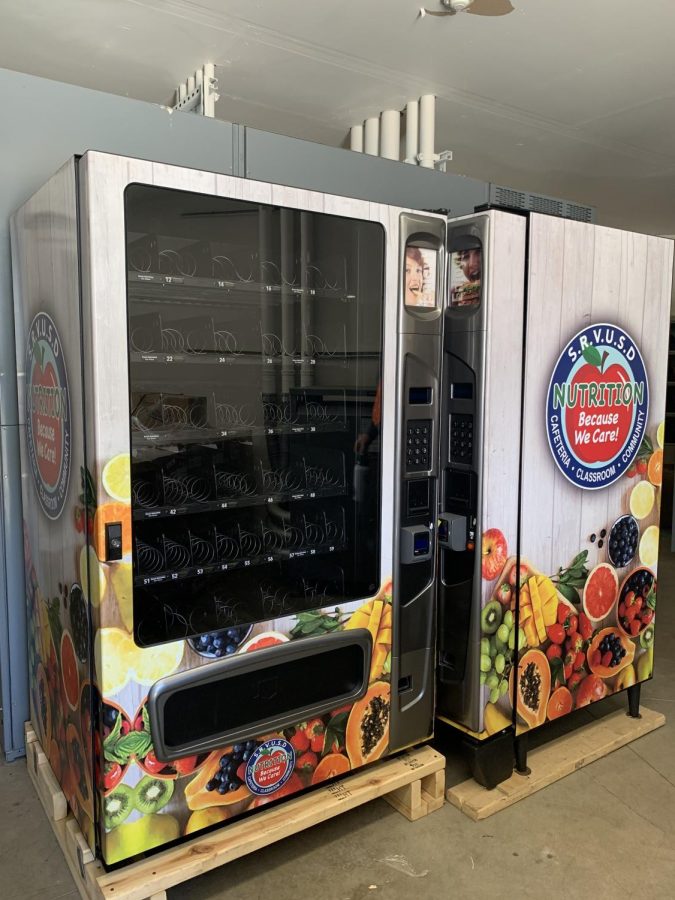Vending machines soon to be replaced
New machines with prepared foods are coming in a few years
New refrigerated vending machines from SRVUSD are kept in storage.
The vending machines that have populated the school campus for about a decade were recently moved to storage during spring break and will eventually be replaced by two new refrigerated ones that provide side meals and drinks.
Students had not been able to access the contents of the old vending machines for several years because the machines are old and not maintained, assistant principal Jeffrey Osborn said.
“[The vending machines were] just taking up space and it’s an eyesore,” campus custodian Richard Galvao said.
The old vending machines have not been working for at least four years, according to head custodian Roberto Manrique. The vending machine company, Bay Natural Vending, was responsible for the machines, but did not respond to school requests to remove them from Cal’s campus.
According to Zetta Reicker, the district’s director of child nutrition, other vendors are not allowed to sell food to students during school hours because it violates the wellness policy.
“We have been trying to contact [the Bay Natural Vending technician] for the last three years to take his machines but he’s not responding,” Manrique said. “I got no choice [but] to remove them by myself.”
Added Osborn, “We have made so many contacts to ask them to remove [the vending machines] from campus. They’re not maintained. They’re not working. We want them gone.”
Custodians finally moved the machines to the back parking lot storage area over spring break to get them off campus.
The hope is the old machines will be replaced by two new San Ramon Valley Unified School District refrigerated vending machines. These have been kept in storage since the pandemic. The plan is to introduce them within the next few years, said Reicker.
The new vending machines cost about $8,000 and $10,000 each. Cal is the only school in the district that has them, according to Reicker.
“The district had a really good plan ready to execute prior to March 2020,” Osborn said. “The district ordered multiple vending machines that were meant to serve child nutrition food and beverages to students using their [student] ID numbers.”
Since the United States Department of Agriculture (USDA) is providing free meals for students this year, there was no need to put the new district machines on campus yet, Osborn said. The side meals and beverages available would have cost money, which would contradict the free lunch program offered.
But if the vending machines serve full meals, then students will have free access to them because those will be funded by USDA, Reicker said.
“We hope to start using [the new vending machines] sometime next year,” Reicker said.

Senior Ylin Zhu is back for her fourth and final year with The Californian Paper and this year as Editor-in-Chief. After pouring her blood sweat and tears...





